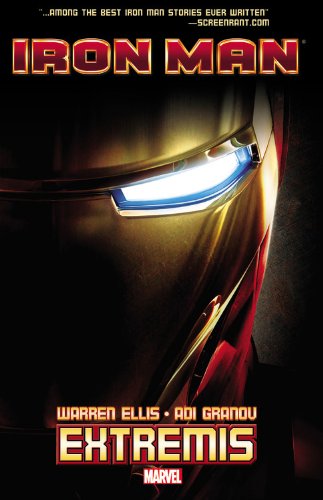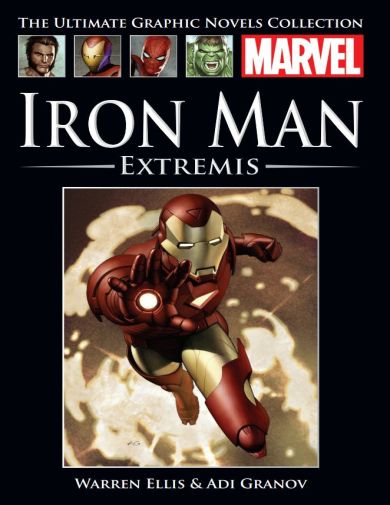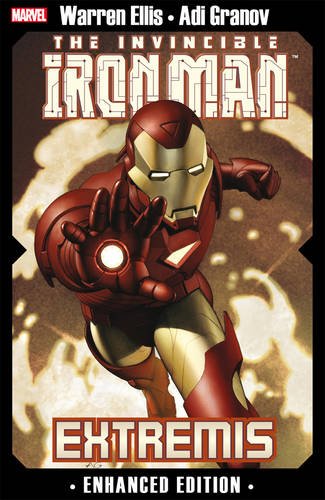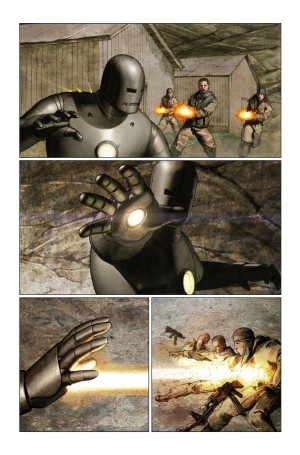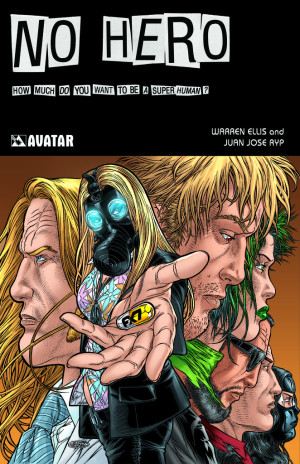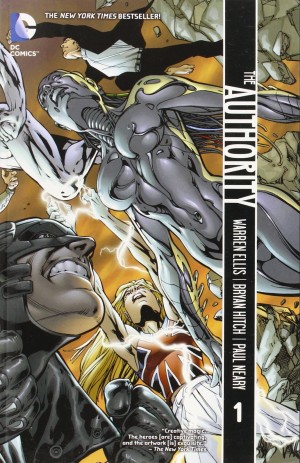Review by Karl Verhoven
Spoilers in review
When Marvel needed to re-boot their ailing Iron Man title in 2005 they gave Warren Ellis a call. The resulting Extremis, is considered among the finest Iron Man graphic novels, and also generated a prose novel.
This remains Ellis’ only Iron Man material, and if some of what he introduced has been absorbed and recycled into common currency, and some surpassed by technological progress, there’s more than enough remaining residue of thought, consideration and innovation. In the early stages Ellis challenges the limitations of Stark’s conceptual mind, first via a crusading journalist (a very thinly disguised John Pilger), then via a technological engineer less inclined to work for the establishment.
While not obvious at first, these discussions cleverly feed into the fundamental problem of the technology supplying the title. It’s a bio-electronic package intended to create super soldiers, developed, but untested until stolen and provided to domestic terrorists. “You can’t just wish the future into being”, Stark notes at one point, “it has to be paid for”, and the cost is terrifying. The transformation occurs on a cellular level bestowing an array of super powers and an instant adaptability to attack. Despite his inexperience, the recipient has little trouble seeing off Iron Man during a preliminary encounter characterised by a lack of concern for public safety.
Highly regarded on publication, Adi Granov’s art hasn’t matured well and now drags down a plot hinging on state of the art technology. He’s deliberately given Extremis the look of a 3-D video game, very modern in 2005, yet now rendered almost stone-aged by progress. Without the wonder, the static, posed panels stand out, as does the lack of background detail. At one point in the opening chapter a supporting character sitting in a bar comments to Stark “You’re the only one here in a suit”. As portrayed by Granov they’re the only ones in the premises at all. It could be considered an ironic comment, but doesn’t come across that way. Granov’s better when drawing the 1960s Iron Man as originally created, the design already considerably beyond passé, and while it lacks a sense of weight, it compensates via style.
At the halfway point a fundamental decision is required, and it transforms Iron Man, restoring the concept of a hero operating at the peak of technological procedure. Ellis’ conceptual gift and the manifestations of Extremis would be latched upon by other writers and are still being employed a decade later with varying degrees of success. He also uses the plot to drop in a few ethical bombs without necessarily exploring them fully, and supplies a postscript few will see coming.
The other side of the coin is whether we want to see our superheroes murdering people in a very graphic manner. Given the technology in play, plenty of other options were available, yet this is an ethical issue Ellis doesn’t dodge. There’s always been a deliberately provocative and sensationalistic element to his writing, so it’s not as if Marvel were unaware of his approach, but perhaps someone with editorial input ought to have considered the ramifications a little more.
Anything nailed to a moment as up to the minute will inevitably date, and it’s a shame about the art, but the plot still thrills. Too many writers have presented Iron Man as little more than a man in a metal suit, but Ellis had the vision to integrate the superhero and the engineer more fully. Would there have been such a successful Iron Man movie without Extremis? Probably not.
